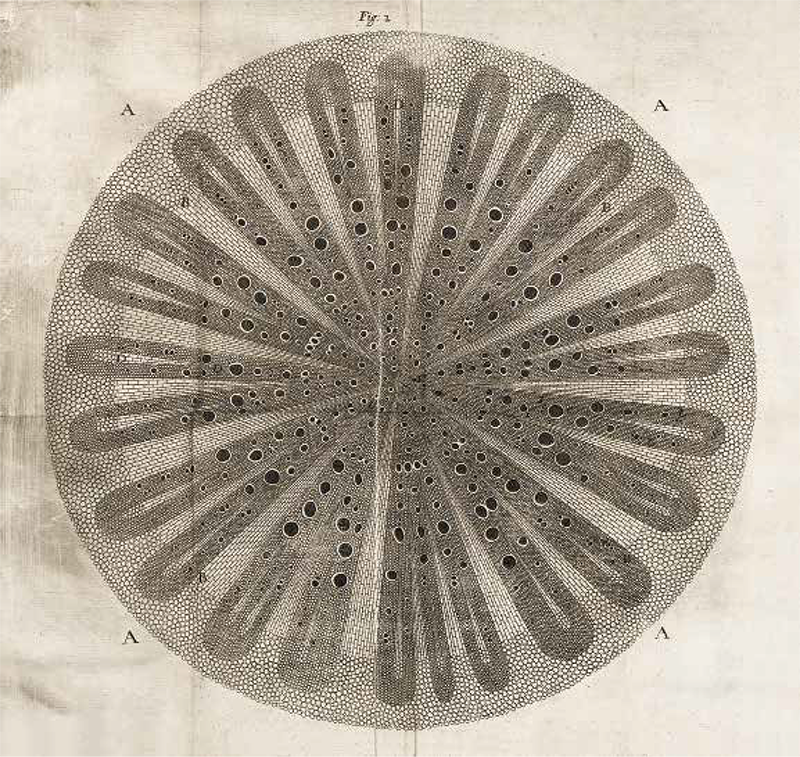
Nehemiah Grew. Vine root. 1682. A microscopic drawing showing a transversal cut of a vine root.
The following excerpt and images are from Manuel Lima's newest book The Book of Circles (Princeton Architectural Press). Reprinted here with permission of the author.
Among the natural shapes primitive humans were exposed to, the bright, circular silhouettes of celestial bodies must have been the most impressive ones. Witnessing the power of the hot, curved sun or the gleaming light of a full moon, our ancestors must have been engrossed by the beauty, perfection, and strength of these shapes. Such reverence for celestial bodies is shared by almost every animist culture, as we can observe from the countless variations of solar deities that emerged independently at different times across the globe. Our late ancestors couldn’t, of course, grasp the truly ubiquitous nature of the circle. They couldn’t attest to the circularity of cells, bacteria, and microscopic organisms or the spherical structure of faraway planets and stars—objects either too small or too distant for the naked eye to spot. Nevertheless, the prevalence of this shape was already overwhelming. They could see it in earth formations such as mounds, craters, and small lakes; in the sections of tree trunks and plant stems; in the moving ripples on the surface of water; and in a variety of leaves, fruits, shells, rocks, and pebbles. Under the right light, they could even glimpse some neighboring planets, such as Mars, Jupiter, and Venus (the third brightest natural object in the sky). Perhaps most important to our inherent social nature, they saw it recurrently in the eyes of their closest relatives, friends, acquaintances, and extended community . Such an omnipresence of circular shapes in nature must have been, if nothing else, a source of wonder and admiration.
The circularity exhibited in nature turned out to be much more than a source of wonder. It soon became a chief guiding principle of human culture, emulated and reinvented in art, religion, language, technology, architecture, philosophy, and science. Used to represent a wide range of ideas and phenomena pertaining to almost every domain of knowledge, the circle became a universal metaphor embraced by virtually every civilization that has ever existed. A closer look at human appropriations of the circle shows a continuous order, from the towns and urban areas we have built over the centuries to the household articles and tools we have designed to the written signs and symbols we have created to communicate with each other.
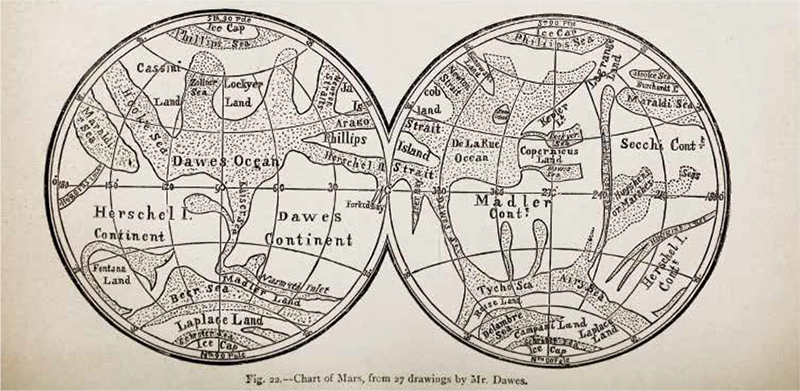
Richard Anthony Proctor. Chart of Mars. 1879.

Henry Lindlahr. Chart to Iridiagnosis. 1919.
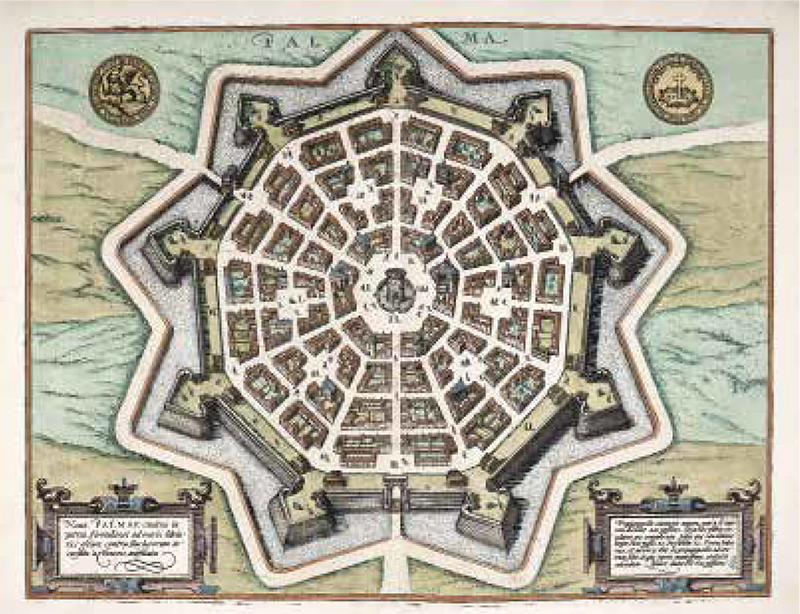
Pasquale Cicogna and Georg Braun. Plan of the city of Palmanova, Italy. 1593.
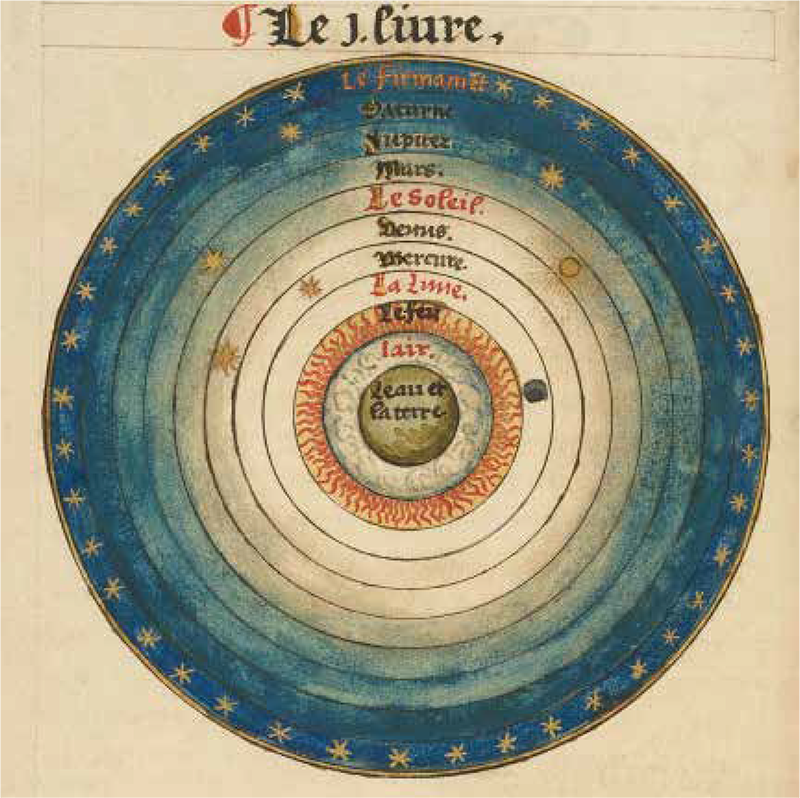
Oronce Finé. Geocentric model. 1549.
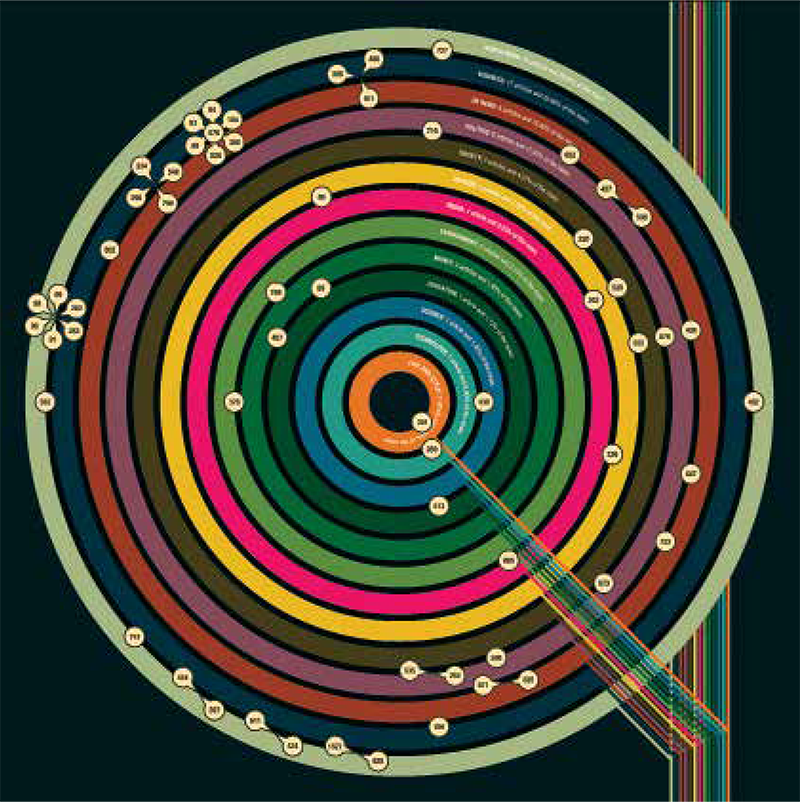
Dave Bowker. One Week of the Guardian: Wednesday. 2008.
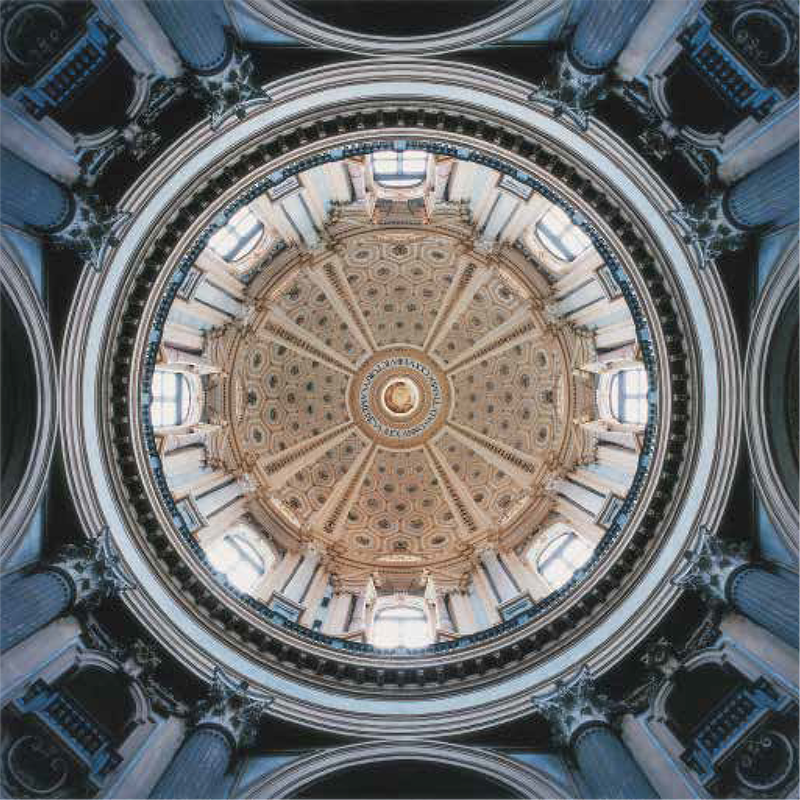
Dome of the Basilica of Superga, Turin, Italy. ca. 1717–31.

Compact Muon solenoid, Large Hadron Collider, Cessy, France. 2008.
